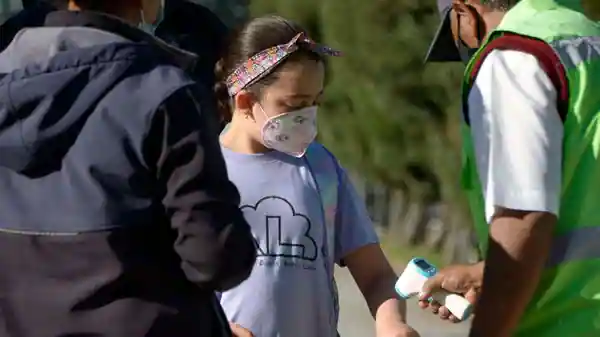
[ad_1]
Many of the most popular masks are selling out quickly as parents look to upgrade their children’s masks to better protect against the Delta variant. The cloth masks many children used last year aren’t as effective against the current strain, scientists say. The Centers for Disease Control and Prevention recommends that all K-12 students wear masks, but parents are largely on their own to figure out what type of mask to buy for their children and where to find it.
Some companies that sell children’s masks with protective filters are seeing heavy demand. Happy Masks, which sells a five-layer children’s mask with a polyester outer layer and three filters, says all 22 of its designs are currently sold out. It has a wait list and says it is restocking twice a week.
Flo Mask, a children’s mask made partly of liquid silicone rubber that claims to filter more than 99.8% of viruses, says that the masks are currently out of stock but it expects to begin shipping them later this month.
Scientists urge parents not to panic. The most important rule, they say, is to find a mask that your child will wear.
“The best mask is the best quality mask your child will tolerate,” says Megan Ranney, an emergency-care doctor and associate dean of the Brown University School of Public Health. Any mask is better than no mask, she says.
To fit well, a child’s mask should seal against the face without gaps allowing air to escape around the nose, cheeks or chin, scientists say. The mask should have a metal nose bridge that can be adjusted to the contour of the nose. Some experts recommend that masks have head straps that hold masks more tightly; others recommend masks with ear loops, which are easier for children to put on.
Dr. Ranney says she got disposable masks for her middle-school daughter who is vaccinated and likes to wear lipstick. She got a five-layer mask from Happy Masks for her 10-year-old son, because she thought it would fit well and not aggravate his eczema. It has proved a good choice, she says.
The most important factors to consider in choosing a child’s mask are fit and comfort, doctors and aerosol researchers say. After that, consider how well the material in the mask filters particles like respiratory aerosols.
If a mask is too loose or too large, “more than 50% of the air you breathe in goes around the filter. It doesn’t matter how good the filter is,” says John Volckens, professor and aerosol scientist at Colorado State University in Fort Collins, Colo.
For his own children, he chose a two-layer stretchy microfiber mask, which he says provides a face-conforming fit and pretty good filtration.
Cloth masks can’t filter particles as effectively as engineered fabrics, like the material known as melt-blown polypropylene that is used in a good surgical mask, Dr. Volckens says. If you opt for cloth for your child—because it’s more comfortable—you can improve its effectiveness by combining it with a layer of engineered synthetic filter made with the MBP or a similar polymer, he says. Or, if your child will tolerate a double-mask, a cloth mask can be worn over a surgical mask.
Nonmedical children’s masks that look like surgical masks are now plentiful at the drugstore, but some experts caution that those don’t fit snugly enough against a child’s cheeks. Scientists recommend those and other masks be rated according to the standards of ASTM. Researchers also advise checking mask-company websites to see if a mask has been third-party tested.
It can be difficult for families to tell which masks to trust and which work best. The U.S. National Institute for Occupational Safety and Health, or NIOSH, tests and approves surgical and industrial N95s because they’re used in the workplace—but not children’s masks. KN95s, made to an equivalent Chinese standard that filters more than 95% of particles, do come in children’s sizes and parents say they often fit well. KN95s have had problems with counterfeiting, however, scientists say.
A number of scientists have stepped in to help parents navigate. Linsey Marr, a Virginia Tech professor who studies airborne transmission of viruses, and her colleague, research scientist Aaron J. Prussin, both of whom are parents themselves, are making recommendations and compiling information about children’s masks in a public Google spreadsheet.
Project N95, a nonprofit that vets and sells masks and other protective gear, includes some children’s masks.
Some parents have turned to reviews and recommendations by Aaron Collins, an engineer who has been testing children’s masks in his spare time and publishing his results as a public service.
His Twitter account, @masknerd, now has nearly 10,000 followers and his work has drawn praise from other researchers. He has found that KF94s, which are made to a Korean standard, can also be a good choice for children. A spreadsheet with his research findings not only gives specifics of his testing but also tells parents where they can get the masks.
Finding a mask that fits properly is usually a matter of trial and error. Dr. Volckens says he and his wife “scoured the internet” before buying six brands to try out on his two children who are in pre-K and third grade.
Never miss a story! Stay connected and informed with Mint.
Download
our App Now!!
[ad_2]